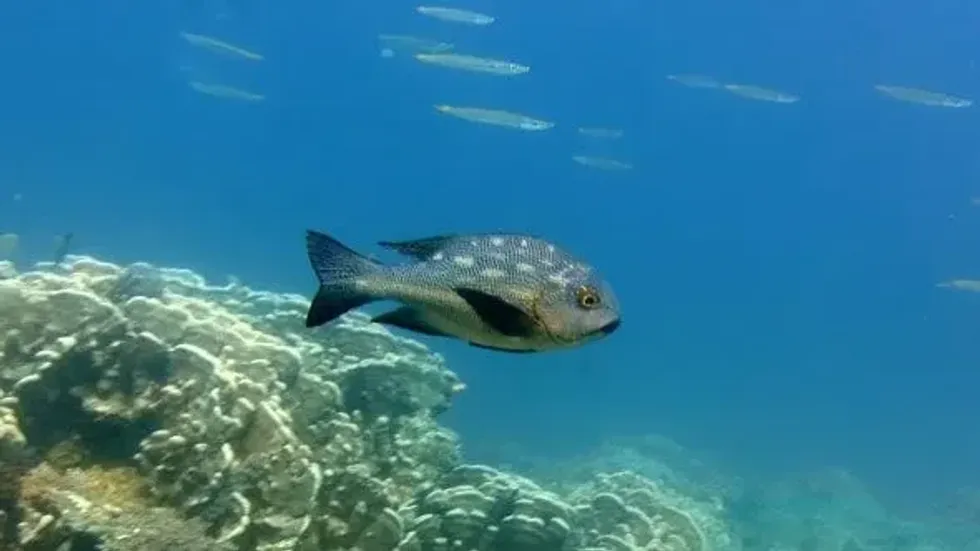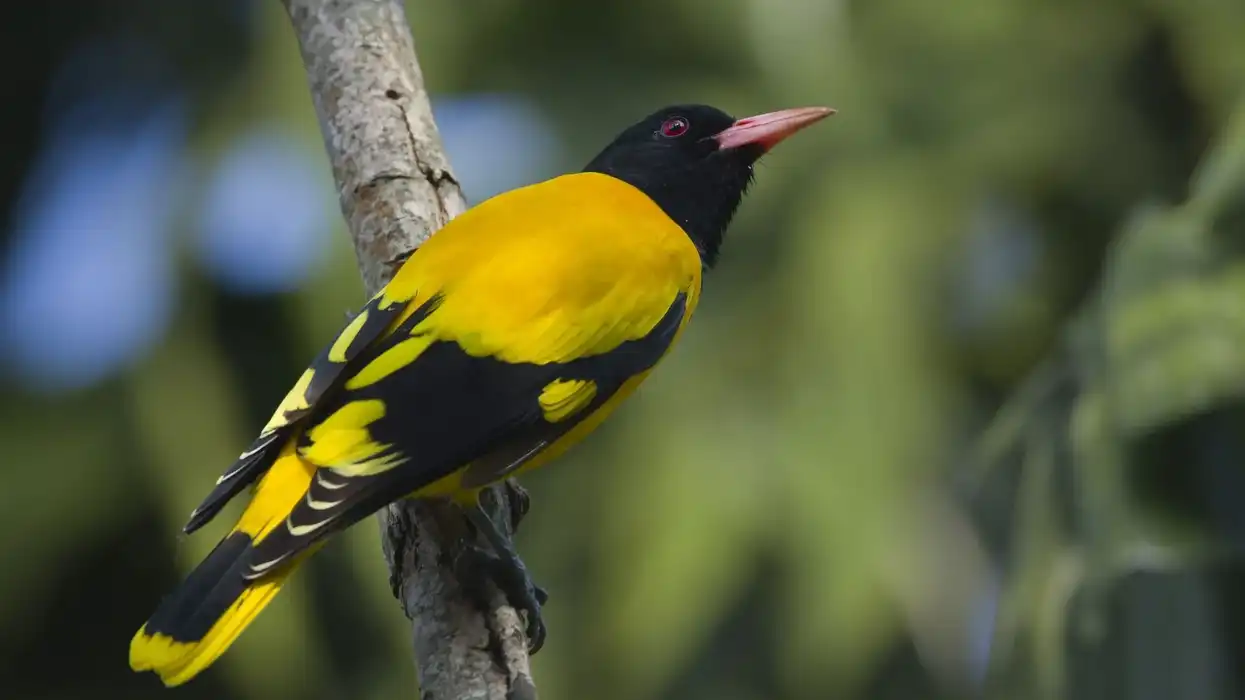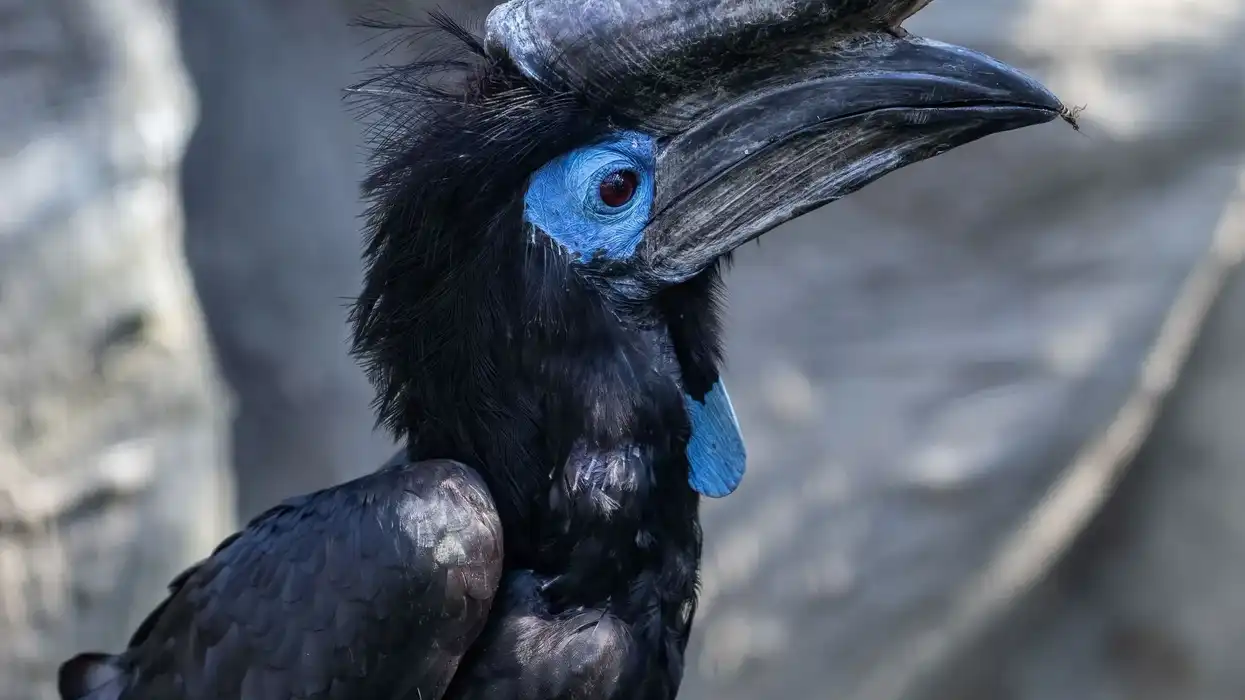Have you ever tried fishing for a Black snapper, better known as Black beauty snapper, Black beauty, Black and white snapper, Black and white seaperch? If no, then add this fish to the list of to-do things for your next fishing trip because we promise you this fish will not disappoint you!
It's pretty straightforward to spot them; their elongated body shape, significant lateral line on their body, and uniform drab color make them an easy target for fishing and a few dangerous predators in the deep waters.
Found in Florida, the Atlantic, the Western Gulf of Mexico, and the Western Caribbean, the snappers feed on crustaceans like shrimps, squids, and small fishes to satisfy their diet. They are solitary individuals that are currently categorized as Least Concern by IUCN, so there are plenty of snappers for you to catch.
Make sure you keep one of the crustaceans as bait when you fish for them, as they won't fall for your standard fishing line as a trap!
Keep scrolling to know more about this fascinating fish, and also take a look at our articles on the freshwater butterflyfish and manta ray as well!
Black Snapper Interesting Facts
What type of animal is a black snapper?
The Black snapper belongs to the species of snappers that are ray-finned fishes.
What class of animal does a black snapper belong to?
Black snapper belongs to the class of Actinopterygii.
How many black snappers are there in the world?
The exact number of Black snappers is unknown. But there are about 105 species of snapper fish in the world!
Where does a black snapper live?
The Black snappers are aquatic creatures, and thus you will find them in large water bodies like the seas and oceans.
What is a black snapper's habitat?
The home of the Lutjanus griseus, aka our Black snapper, is quite versatile. It can be spotted alongside the steep walls and channels of seaward reefs and lagoons along with the shallow waters of Florida, the Bahamas, and the Caribbean.
In fact, did you know that upon reaching a size of 12 in, the Black snapper shifts to deeper waters and deeper channels in the coastal waters? These deep homes are mostly over wrecks, artificial reefs, coral reefs, and gulf ledges. Quite picky for a fish, isn't it?
Who do black snappers live with?
Strangely, the Black snapper lives in solitary when young while the adults are found in large schools in the oceans.
How long does a black snapper live?
This species of snappers attains its maximum age at 25 years. A few Black snappers are more than 10.5 in long.
How do they reproduce?
The family of snappers spawns the eggs from April to November, peaking during summers. An interesting fact here is about the lunar cycle that significantly influences the reproduction of the Black snapper. How? The Black snapper aggregates its spawning during a full moon, and as a matter of fact, individual snappers spawn multiple times.
The little juveniles hatch within just 20 hours post-fertilization. The young and other slowly developing juveniles (larvae) then start separating from the mother Black snapper once they get to the size of 3.14 in and move to coastal waters and shallow rocky areas where they completely grow into adults.
What is their conservation status?
The World Conservation Union has not yet listed this species under any conservation threat, so it is currently Not Evaluated.
Black Snapper Fun Facts
What do black snappers look like?
The search for the Black snapper will be easier if you know exactly what it looks like, so a quick overview of its physical appearance tells us that it has a moderately deep body with 14 dorsal soft rays, 10 dorsal spines, eight soft rounded anal soft rays, and three anal spikes.
Its characteristic Black name arrives from a black spot found on the bottom of the axil of its pectoral fin.
How cute are they?
These fish are relatively large to be called cute. Still, their varying shades of black definitely make them look attractive to the human eye, so you could say the characteristic of attractiveness may apply to these snappers.
How do they communicate?
The Black snapper belongs to the family of fishes, and fishes are known to use several silent mechanisms to communicate. They have innovative ways to do so, such as gesture and motion with their fins.
How big is a black snapper?
If you plan on fishing this weekend, then keep a lookout for this 2 ft 2 in snapper fish that weighs around 1 lb! Pretty heavy to catch, but once caught, the efforts will be rewarding. The fish belonging to the Lutjanus genus could be thought of as five times bigger than the usual ones.
How fast can a black snapper swim?
Caught at depths of 1000 ft and 30 ft, the speed of this species of snapper fish is unknown, but since it is known to be a fast fish, its speed can be high!
How much does a black snapper weigh?
The Black snapper can be a pretty heavy one to catch if you have plans for fishing this week. Not only are these snappers found at varying depths, but the ones found can weigh about 20 lb! Although in some other parts of the world like Florida, these species have recorded weights of 17 lb.
What are the male and female names of the species?
The male and female Black snapper are called Black snapper, and they have no special names. Both of them are caught in the same habitat, deep waters, and have similar length and size.
They differ in their maturation range; the female snapper is sexually matured when she has a length of about 18-20 cm, and the male sexually matures when he reaches the length of 38-40 cm.
What would you call a baby black snapper?
Firstly they are known as juveniles and are spotted in shallow waters as compared to their adult counterparts. Their habitat is usually the mangroves and seagrass beds.
The baby snapper feeds until they achieve a length of 80 mm and eventually moves to deeper areas. These juveniles appear blue and have a significant white lateral line on their tiny bodies.
What do they eat?
This snapper fish is a carnivorous predator by nature, and it preys near the deeper areas of oceans. Its a quite an opportunistic feeder, feeding on worms, shrimps, invertebrates, and other fish.
The snappers also feed on several other smaller fish. But just as much as it's a predator, it is also prey to larger fishes such as the Barracuda, sharks, Moray eels, and many other larger fish.
Are they dangerous?
This snapper fish because is known to poison humans. It could be the reason you are suffering from ciguatera poisoning. This happens to people who eat contaminated fish, so make sure you verify with the seller about the quality of fish before adding it to your dinner menu!
Would they make a good pet?
This black species of snapper would definitely not classify as a pet. Why you may ask?
Well, the snapper is accustomed to living in deep water near coral reefs and wrecks, so it would definitely not survive in an ordinary fish pond. Although perfect for your fishing trips, the snapper would not cut it to make your friendly pet. You can always have some other tiny fish to give you company!
Did you know...
The world calls the Black snapper a snapper because it has sharp canine teeth, so beware of that! But how exactly is the Black snapper even caught?
If you are in Florida, then the search for this fish on your next fishing adventure will be rewarding for sure! Snapper fishing is albeit no easy task. Let us warn you; a light tackle is used to catch it while bottom fishing.
Do not underestimate these fish, for they are a lot smarter than you could imagine! They recognize lines and hooks, so you should always hide the hook by putting it inside a piece of bait.
The taste of Black snapper is sweet and more profound when grilled as compared to the Grouper and is, in fact, quite a treat for any tastebuds!
But ultimately, which snapper is the best? It's not the Black snapper, rather the Red snapper that is perfect in all senses and, with its white meat and fine texture, can be the apt choice for any fulfilling meal.
Is there a difference between snapper and red snapper?
The Black snapper is very often confused with the Red snapper (Lutjanus campechanus), but they are not the same. The Red snapper has some key differences from the usual snapper, first and foremost being the red color that makes it easier to spot. There's also a comma-shaped black mark at the end of its pectoral fins.
What eats snapper fish?
The snapper is a solitary animal and so falls prey to some of the bigger fishes of the world, like barracuda and sharks. They feed on relatively smaller fishes like the snapper. In fact, the snapper's juveniles become easy targets for the same predatory fish until they themselves turn into predators.
Here at Kidadl, we have carefully created lots of interesting family-friendly animal facts for everyone to discover! Learn more about some other fishes from our stingray surprising facts and chimaera facts pages.
You can even occupy yourself at home by coloring in one of our free printable black snapper coloring pages.










